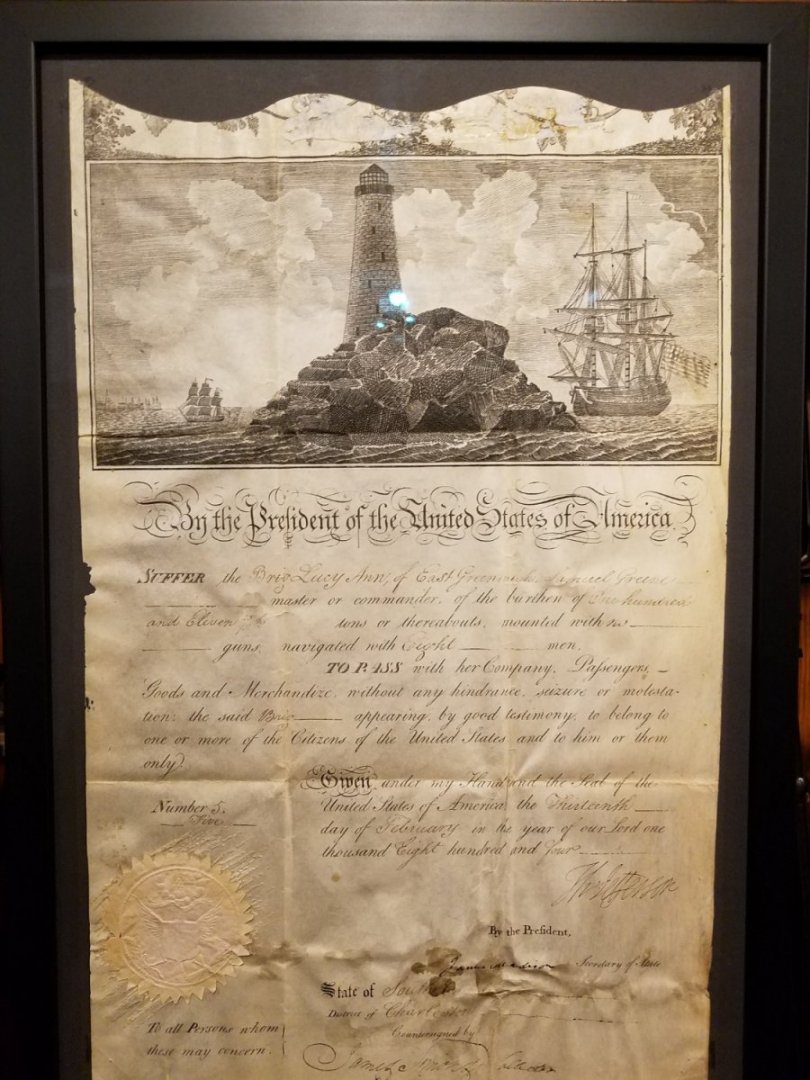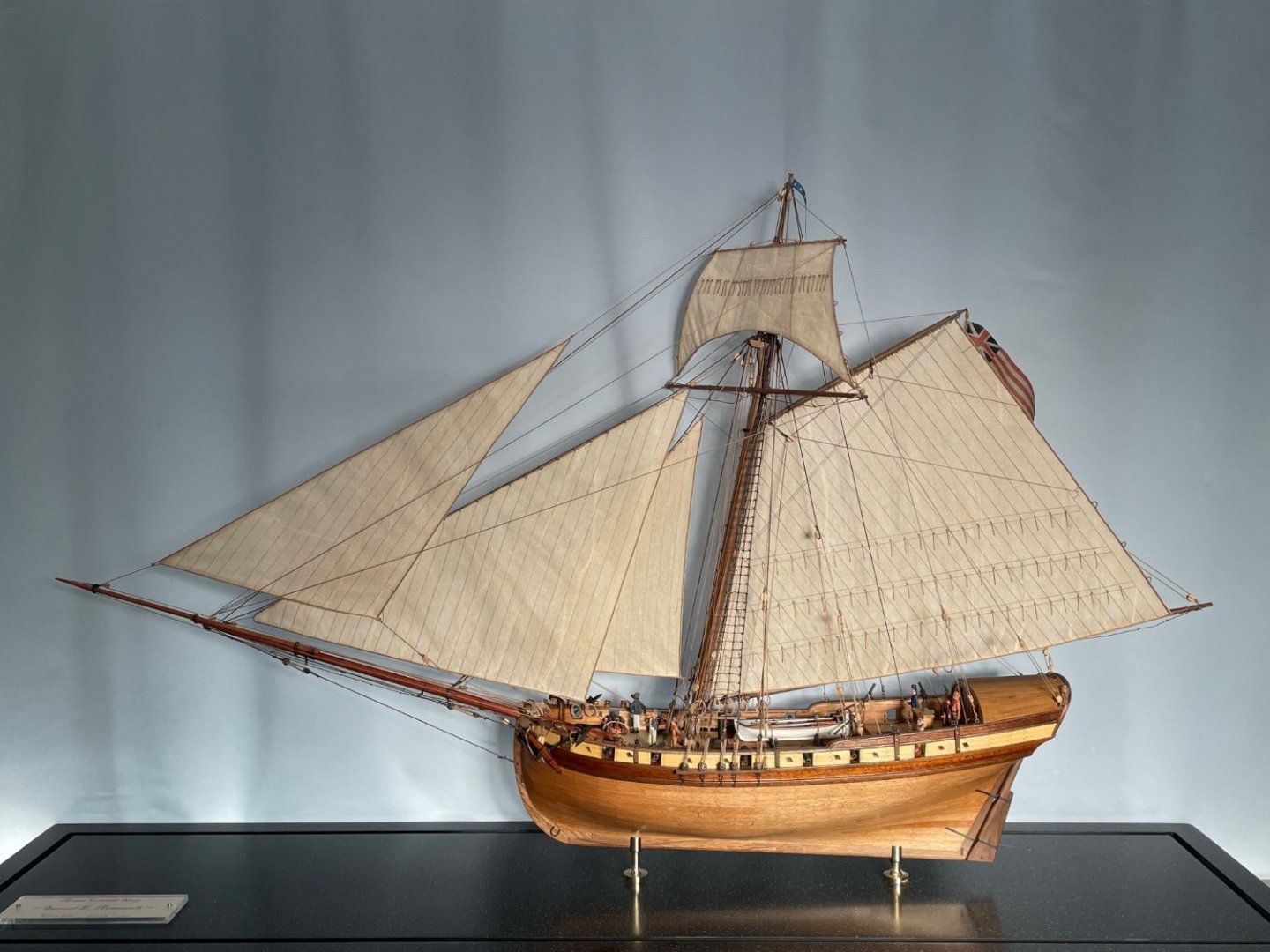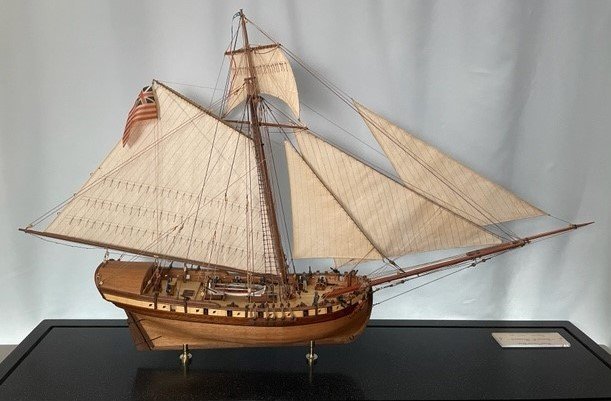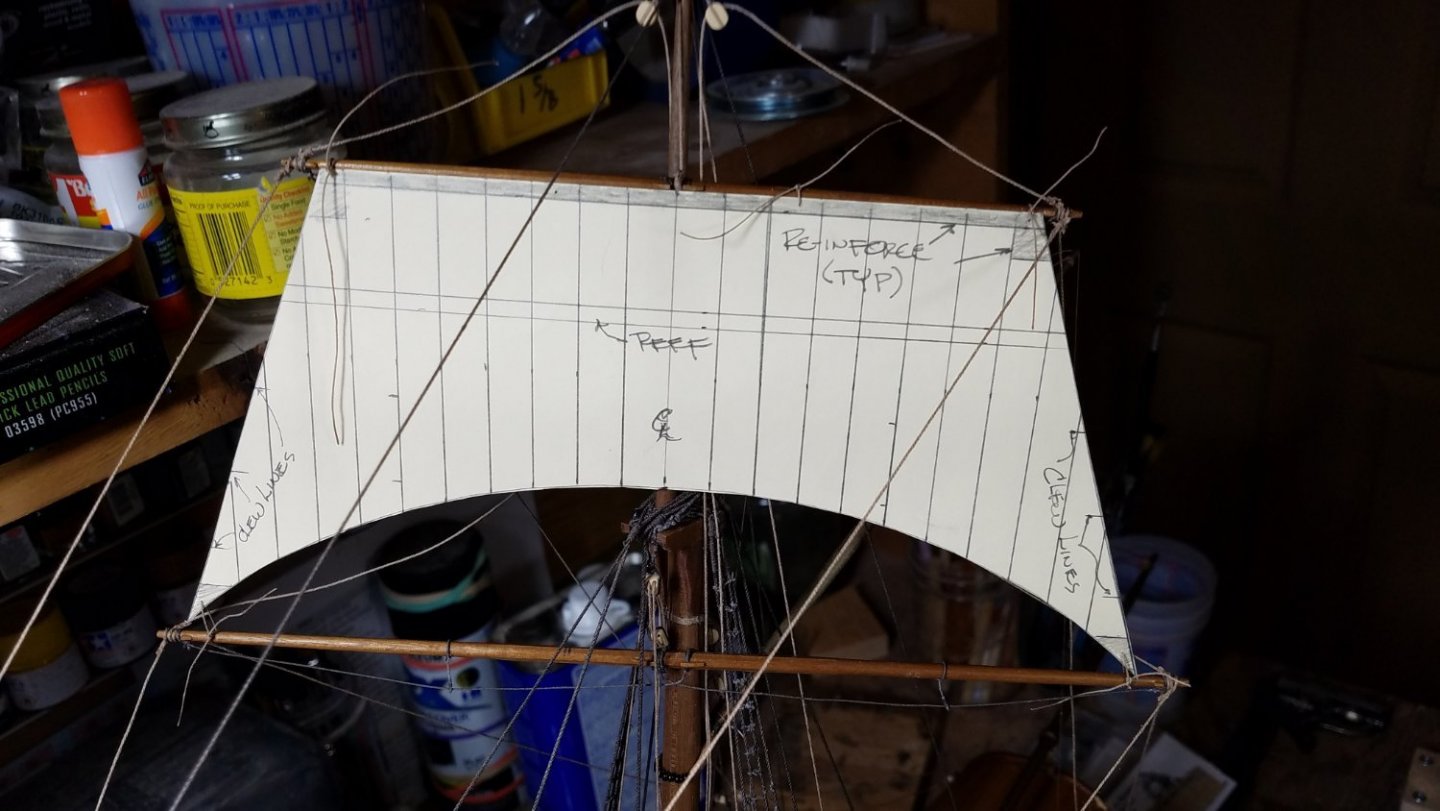-
Posts
133 -
Joined
-
Last visited
Content Type
Profiles
Forums
Gallery
Events
Posts posted by DennisL
-
-
Hi Mark
I agree with Allan's points.
As for models to build, I thoroughly enjoyed the Medway Longboat kit from Syren Models. The scale is large, the instructions are great with lots of tips and it builds into a very attractive model. Not only for rigging but it is a good way to learn about planking.
My 2 cents.
-
I agree with Steven. I have built models with and without sails but prefer to show them with sails. The material I use is silkspan which I purchase thru Bluejacket. There are a number of tutorials on the website which show how to ue this material. It takes some experimentation but once mastered I think silkspan lends itself to realistic sails at scales of 1:48 and 1:64. Haven't tried anything in smaller scales. I try to show ships with partial sails furled and unfurled. This lends itself to more visibility of the rigging.
Of course if you have sails on your model you should probably show some figures on deck which is another kettle of fish to discuss....
Dennis
- DeHammer, mtaylor, Keith Black and 1 other
-
 4
4
-
Nice work Dave. Excellent looking model!
- Keith Black and Dave_E
-
 2
2
-
-
Hi Dave,
I bought a fair a frame from model expo last year. I hate to speak ill of any company's product but I think it is a waste of money. The hardware is poor and the unit does not work very well. You would be best served by building your own version.
Dennis
-
-
Thought I would pass this very interesting document which I came across while visiting the Varnum Memorial Armory in East Greenwich RI recently.
It is a letter requesting safe passage from the Barbary States for the brig Lucy Ann of East Greenwich dated February 13, 1804 and signed by President Thomas Jefferson and co-signed by Secretary of State James Madison. It was explained to me that the cut curved top of this document was used to proved the authenticity of the document. Not sure exactly how this worked. I guess the inspecting party had the missing top half.
The Varnum Armory is a very interesting place. The museum is small but is very compact with great relics from the Revolution and Civil War (Gettysburg) in particular. The museum is free and the guides were very friendly and knowledgeable. A great way to spend an afternoon!
-
-
Thank you to everyone that responded to my original post! The information has been much appreciated. You guys are amazing!
This project has taken a few turns. I originally started the project using Jeff Staudt's drawings of the Mediator which were excellent. I also had Chapelle's information to go on. As I wanted to have her with a suit of sails I discovered that Jeff's plans did not show either a sail plan or the running rigging for the sails. I ended up getting the drawing set for the Armed Virginia Sloop thru Model Shipways as a guide. This was a big help but there were some differences between the Staudt rigging plans and the AVS. As I wanted sails, when in doubt I ended up leaning towards the AVS. As a result, I have a ship which is rigged more towards the 1775 period than the 1745 era. It also gave me the opportunity to hoist a Grand Union flag rather than the British Ensign. Not quite a model of the Mediator but I hope is close enough to call her an Armed Colonial Sloop. I have included a photo of the model to date.
I hope this meets with everyone's approval.
-
I am working on attaching the sails to my current project - the sloop Mediator (1745). I am showing her with the topsail at an angle to the mast. The picture attached shows the paper template I made from Steele's Elements of Mast Making, Sails and Rigging. I did this so I could properly set the heights of the yards in relation to one another. What I discovered was that because of the rake of the mast, when the yards are set at an angle to the mast, the centerlines of each yard does not line up unless the yards are tilted down to match the angle of the mast. (They are not parallel to the horizon). I never noticed this before so I checked my printed resources and discovered the same thing. I've never read anything about this in my resource books. Is this correct? Any comments/suggestions is greatly appreciated.
- bruce d and Keith Black
-
 2
2
-
-
I made furled sails for the Medway Longboat using an article I found in one of the tutorials. I never used Silkspan before but the sails came out looking great. Good luck!
- allanyed, mtaylor and thibaultron
-
 3
3
-
great looking model. Hammocks are a nice touch!
- thibaultron, Keith Black, Ian B and 2 others
-
 5
5








IJN Akagi Carrier Planes
in Nautical/Naval History
Posted
I am currently building the Hasegawa 1/350 model of the IJN Akagi. I am building her as she was preparing to launch the first strike against Pearl Habor. I have researched the types of planes used on the first strike and have found the majority of tail identification numbers for these planes.
My question is this. Does anyone know why the identification numbers and letters on each tail was in the Latin alphabet rather than the Japanese alphabet?? The Akagi had her name on the stern in Japanese along with a huge A on the stern of her flight deck also in Japanese identifying her as the Akagi. Why would her planes have an alpha numeric I'd in Latin? I assume most Japanese pilots would not know how to read the latin alphabet.
Sounds like a crazy question but I haven't found anywhere which mentions this.
Thanks in advance for any help!
Dennis